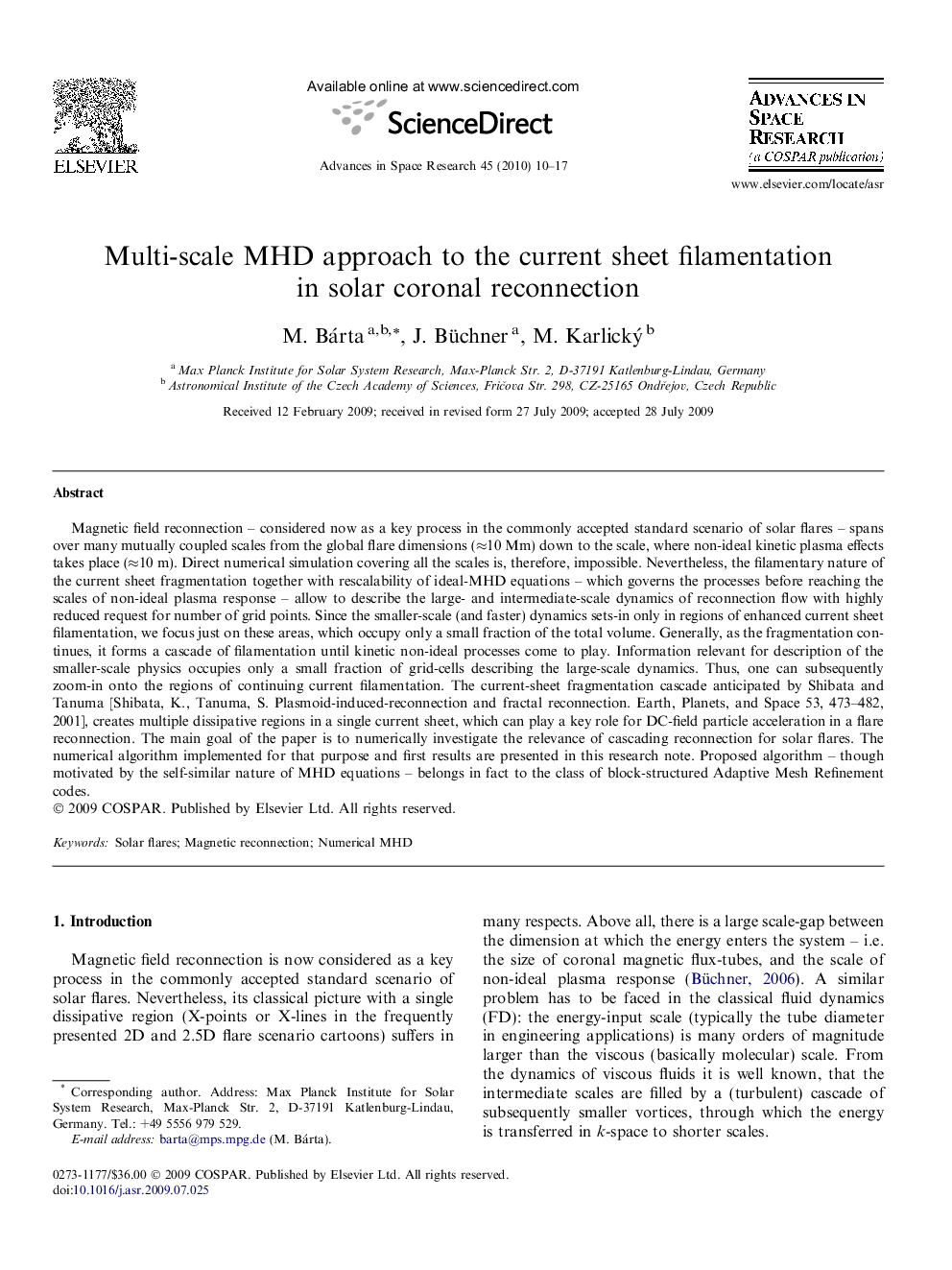| Article ID | Journal | Published Year | Pages | File Type |
|---|---|---|---|---|
| 1767778 | Advances in Space Research | 2010 | 8 Pages |
Magnetic field reconnection – considered now as a key process in the commonly accepted standard scenario of solar flares – spans over many mutually coupled scales from the global flare dimensions (≈10 Mm) down to the scale, where non-ideal kinetic plasma effects takes place (≈10 m). Direct numerical simulation covering all the scales is, therefore, impossible. Nevertheless, the filamentary nature of the current sheet fragmentation together with rescalability of ideal-MHD equations – which governs the processes before reaching the scales of non-ideal plasma response – allow to describe the large- and intermediate-scale dynamics of reconnection flow with highly reduced request for number of grid points. Since the smaller-scale (and faster) dynamics sets-in only in regions of enhanced current sheet filamentation, we focus just on these areas, which occupy only a small fraction of the total volume. Generally, as the fragmentation continues, it forms a cascade of filamentation until kinetic non-ideal processes come to play. Information relevant for description of the smaller-scale physics occupies only a small fraction of grid-cells describing the large-scale dynamics. Thus, one can subsequently zoom-in onto the regions of continuing current filamentation. The current-sheet fragmentation cascade anticipated by Shibata and Tanuma [Shibata, K., Tanuma, S. Plasmoid-induced-reconnection and fractal reconnection. Earth, Planets, and Space 53, 473–482, 2001], creates multiple dissipative regions in a single current sheet, which can play a key role for DC-field particle acceleration in a flare reconnection. The main goal of the paper is to numerically investigate the relevance of cascading reconnection for solar flares. The numerical algorithm implemented for that purpose and first results are presented in this research note. Proposed algorithm – though motivated by the self-similar nature of MHD equations – belongs in fact to the class of block-structured Adaptive Mesh Refinement codes.
